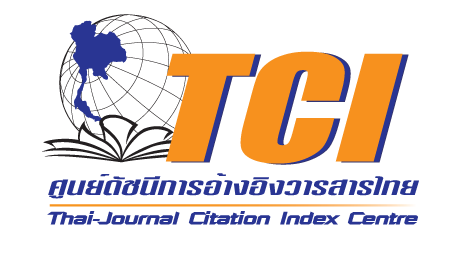The Happy Workplace Organizational Culture Development Model of Primary Education Service Area Offices in The Northern Region
DOI:
https://doi.org/10.14456/psruhss.2024.58Keywords:
Model, Organizational culture, Happy workplaceAbstract
This research aims to 1) to study the components, 2) to examine the current conditions, problems, and guidelines, 3) to create the model, and 4) to evaluate the modern organization culture of happiness model for the schools. The researcher employed a mixed-methods research design approach, with informants and samples including Expert, Administrative expert, Academic, Education administrator, School administrators and teachers. Data was collected through interviews, confirmatory factor analysis, questionnaires, workshop, connoisseurship, and public hearing. The data was then analyzed using content analysis, confirmatory factor analysis, mean, standard deviation, frequency, and percentage.
The result of the research shows that: 1) The modern organization culture of happiness model for the schools comprises 6 factors and 58 indicators. According to the statistical analysis, including the relative chi-square value, p-value of X2, RMSEA value, CFI value, TLI value, and SRMR values, it revealed that the model is consistent with the empirical data. 2) The overall situation is at a high level, with the most significant problem being Personnel have too much regular and extra workload. So the guideline is Defining the scope of work tasks as necessary, Supervision and monitoring of work through digital platforms. 3) The modern organization culture of happiness model for the schools consists of 6 factors, 1) principle, 2) objective, 3) input, 4) process, 5) output and outcome, and 6) condition of success. which are high accurate and appropriate. 4) The feasibility and utility of the model are rated at the high level.
References
กมลทิพย์ ใจเที่ยง. (2562). การบริหารองค์กรแห่งความสุขในโรงเรียนประถมศึกษา (วิทยานิพนธ์ปริญญาดุษฎีบัณฑิต). นครปฐม: มหาวิทยาลัยศิลปากร.
กัญญดา ประจุศิลป. (2561). การจัดการทางการพยาบาลและภาวะผู้นำ. กรุงเทพฯ: โรงพิมพ์แห่งจุฬาลงกรณ์มหาวิทยาลัย.
กัญญาพัชร สุทธิเกษม, ศิรินันท์ กิตติสุขสถิต, วรรณี หุตะแพทย์ และปรียา พลอยระย้า. (2564). นวัตกรรมสร้างเสริมครอบครัวมีสุขคนทำงานองค์กร. นครปฐม: สถาบันวิจัยประชากรและสังคม มหาวิทยาลัยมหิดล.
ชาญวิทย์ วสันต์ธนารัตน์ และธีร์ธรรม วุฑฒิวัตรชัยแก้ว. (2560). องค์กรแห่งความสุข 4.0. กรุงเทพฯ: แอท โฟร์พรินท์.
ดวงเนตร ธรรมกุล. (2558). เส้นทางเดินไปสู่องค์กรสุขสภาวะภาครัฐ เอกสารสำหรับผู้ทำงานสร้างสุของค์กร. นนทบุรี: ฑีรกานต์ กราฟฟิค.
ตรรกพร สุขเกษม และปิยากร หวังมหาพร. (2563). ความสุขในการทำงานตามรูปแบบวัฒนธรรมองค์การของอาจารย์มหาวิทยาลัยราชภัฏภาคเหนือ. สักทอง : วารสารมนุษยศาสตร์และสังคมศาสตร์ สถาบันวิจัยและพัฒนา มหาวิทยาลัยราชภัฏกำแพงเพชร, 26(1), 97-110.
นรรัชต์ ฝันเชียร. (2563). จุดเริ่มต้นที่แสดงให้เห็นว่าคุณ Move On สู่การเป็นครูยุคใหม่. สืบค้น 13 ธันวาคม 2564, จาก https://www.trueplookpanya.com/education/content/81868/-teaartedu-teaart-teaarttea-teamet-
นิธนิวา ดำรงค์มงคลกุล. (2563). ทิศทางครูไทยในบริบทการศึกษาโลก. วารสารข้าราชการครูและบุคลากรทางการศึกษา, (4), 11.
นิศาชล ฉัตรทอง. (2561). บริบทภาครัฐไทยกับการก้าวเข้าสู่องค์กรแห่งนวัตกรรม. วารสารวิชาการมหาวิทยาลัยมหิดล, 17(1), 25-35.
ปิยะธิดา ปัญญา และไพศาล วรคำ. (2560). ความสุขในการปฏิบัติงานของบุคลากรมหาวิทยาลัยราชภัฏมหาสารคาม (รายงานการวิจัย). มหาสารคาม: คณะครุศาสตร์ มหาวิทยาลัยราชภัฏมหาสารคาม.
ไพฑูรย์ สินลารัตน์. (2558). บทบาทของครูในอนาคต : เตรียมผู้เรียนให้สอนตนเองได้ต่อไป. วารสารมนุษยศาสตร์และสังคมศาสตร์ มหาวิทยาลัยราชพฤกษ์, 1(1), 1-4.
วีระ บัวผัน. (2564). รูปแบบการพัฒนาวัฒนธรรมองค์การสู่ความเป็นเลิศของสถานศึกษา สังกัดสำนักงานเขตพื้นที่การศึกษาประถมศึกษากำแพงเพชร เขต 1. วารสารสังคมศาสตร์และมานุษยวิทยาเชิงพุทธ, 6(1), 145-161.
ศนิชา ภาวโน. (2562). รูปแบบการพัฒนาผู้บริหารโรงเรียนตามแนวคิดโรงเรียนเป็นชุมชนแห่งการเรียนรู้ (วิทยานิพนธ์ปริญญาครุศาสตรดุษฎีบัณฑิต). กรุงเทพฯ: จุฬาลงกรณ์มหาวิทยาลัย.
ศูนย์ Happy Workplace Center. (2563). แนวทางและองค์ความรู้ สำหรับเครือข่ายองค์กรสุขภาวะ. กรุงเทพฯ: แอทโฟร์พริ้นท์.
สถาบันวิจัยประชากรและสังคม มหาวิทยาลัยมหิดล. (2559). สุขภาพคนไทย 2559 : ตายดี วิถีที่เลือกได้. นครปฐม: มหาวิทยาลัยมหิดล.
สมศักดิ์ ดลประสิทธิ์. (2564). แนวทางการจัดการศึกษาเพื่อพัฒนากำลังคนในศตวรรษที่ 21. คุรุสภาวิทยาจารย์, 2(1), 1-12.
สัมมา รธนิธย์. (2556). หลักทฤษฎีและปฏิบัติการบริหารการศึกษา (พิมพ์ครั้งที่ 3). กรุงเทพฯ: พิมพ์ดี.
สำนักงานพัฒนาเศรษฐกิจจากฐานชีวภาพ (องค์การมหาชน). (2566). พระราชดำรัสและพระบรมราโชวาทของ
ในหลวงรัชกาลที่ 9 : ความสุขความเจริญนี้... สืบค้น 4 ธันวาคม 2567, จาก https://www.bedo.or.th/contentdetail?id=3439
สำนักงานเลขาธิการคุรุสภา. (2562). กรอบสมรรถนะครูเอเชียตะวันออกเฉียงใต้ (ซี-ทีซีเอฟ). กรุงเทพฯ: ออนป้า.
สุทัสสา อุปลกะลิน. (2564). ทำไมจึงต้องออกเกณฑ์อัตรากำลัง ข้าราชการครูและบุคลากรทางการศึกษาในสถานศึกษาใหม่. วารสารข้าราชการครูและบุคลากรทางการศึกษา, (1), 14-16.
สุรพงษ์ มาลี. (2563). Resilient Organization and Workforce : คุณลักษณะขององค์กรและกำลังคนที่จะรอดพ้นวิกฤติในศตวรรษที่ 21. วารสารข้าราชการ, 62(2), 15-20.
อรรถพล อนันตวรสกุล. (2564). SLC-School as Learning Community โรงเรียนในฐานะชุมชนแห่งการเรียนรู้คืออะไร พร้อมภาพประกอบ Infographic. สืบค้น 5 มิถุนายน 2567, จาก https://www.educathai.com/knowledge/articles/480
Arbuckle, J. L., & Wothke, W. (1999). Amos 4.0 user’s guide. Chicago. IL: SmallWaters Corporation.
Comrey, A. L., & Lee, H. B. (1992). A First Course in Factor Analysis (2nd ed.). Hillsdale, NJ: Lawrence Erlbaum.
Jennifer Liu. (2022). These are the 5 biggest signs of a toxic workplace. Retrieved June 29, 2022 from https://www.cnbc.com/2022/03/31/these-are-the-5-biggest-signs-of-a-toxic-workplace.html
Krejcie, R. V. & Morgan, D.W. (1970) Determining Sample Size for Research Activities. Educational and Psychological Measurement, 30(3), 607-610. https://doi.org/10.1177/001316447003000308
Madaus, G. F., Scriven, M. S., & Stufflebeam, D. L. (1983). Evaluation Models Viewpoints on Educational and Human Services Evaluation. (8 th ed.). Boston: Khuwer-Nijh off Publishing.
Melnyk, S. A., & Denzler, D. A. (1996). Operations management: A value-driven approach. Boston, MA: Irwin/McGraw-Hill.
Sato, M. (2016). The Joy of Learning: Towards a Learning Community. Tokyo: University of Tokyo Press.
Schumacker, R. E., & Lomax, R. G. (2010). A beginner’s guide to structural equation modeling
(3rd ed.). New York: Routledge.
Tiger. (2020). Digital Leadership. Retrieved June 5, 2024 from https://thaiwinner.com/digital-leadership/

Downloads
Published
How to Cite
Issue
Section
License
Copyright (c) 2024 Humanities and Social Sciences Journal of Pibulsongkram Rajabhat University

This work is licensed under a Creative Commons Attribution-NonCommercial-NoDerivatives 4.0 International License.
Any articles or comments appearing in the Journal of Humanities and Social Sciences, Rajabhat Phibulsongkram University, are the intellectual property of the authors, and do not necessarily reflect the views of the editorial board. Published articles are copyrighted by the Journal of Humanities and Social Sciences, Rajabhat Phibulsongkram University.







